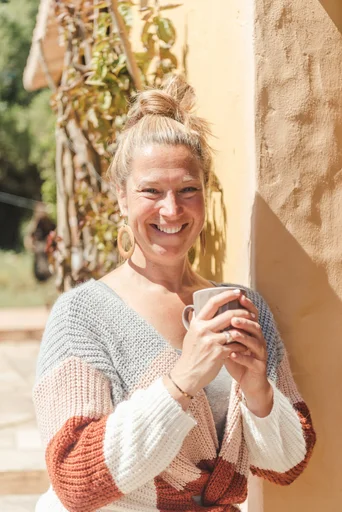Shin Splint Stretches You Can Do in Just 5 Minutes - Yoga Journal

Understanding Shin Splints
Shin splints, also known as medial tibial stress syndrome, are a common lower leg overuse injury that affects athletes and individuals engaged in physical activities. Shin splints occur due to repetitive stress on the shinbone and the tissues attaching the shinbone to the muscles surrounding it. This condition is prevalent among runners, dancers, and military recruits, with rates ranging from 4% to 35% in at-risk groups, affecting women more frequently than men.
The primary causes of shin splints include improper footwear, heightened inflammation in the lower leg (experienced by approximately 70% of runners), and running mechanics. Research has shown that correct exercise form combined with strength, flexibility, and neuromuscular control exercises can help prevent pain and overuse leading to shin splints. Additionally, wearing appropriate running footwear with custom insole designs has been found to reduce impact during running, offering relief from tibial stress after shin splint occurrences.
Common symptoms of shin splints include muscle tenderness or soreness along the inner part of the lower leg and mild swelling. It is essential to address this condition promptly to avoid long-term health issues. Regular stretching plays a crucial role in relieving muscle tension and supporting blood circulation, both beneficial for those dealing with shin splints. Stretching enhances muscle endurance and reduces discomfort in the shins during intense activities.
5-Minute Yoga Stretches for Shin Splints

Shin splints can be alleviated through targeted yoga stretches that focus on the lower leg muscles. These stretches not only provide relief but also contribute to the overall flexibility and strength of the affected areas. Here are five simple yet effective yoga stretches that can be completed in just 5 minutes, making them a convenient addition to any daily routine.
Stretch 1: Calf and Soleus Stretch
To perform this stretch, start by standing facing a wall with your hands resting against it at shoulder height. Step back with one foot, keeping it straight and pressing the heel into the ground. Bend your front knee while keeping your back leg straight, feeling the stretch in your calf and soleus muscles. Hold for 30 seconds on each leg, repeating 3 times.
Stretch 2: Seated Forward Bend
Sit on the floor with your legs extended in front of you. Slowly bend forward from your hips, reaching towards your feet while keeping your spine long. Hold this position for 30 seconds, aiming to increase the stretch with each exhalation. Repeat 3 times.
Stretch 3: Downward-Facing Dog
Begin on your hands and knees, then lift your hips towards the ceiling, forming an inverted "V" shape with your body. Press through your palms and heels while lengthening your spine. Hold this pose for 30 seconds, focusing on deep breaths to enhance the stretch. Repeat 3 times.
The evidence from a University of Michigan study suggests that these yoga poses can effectively target key muscles involved in shin splints, providing relief and promoting healing.
Stretch 4: Standing Forward Bend
Another effective yoga stretch for shin splints is the standing forward bend. This pose primarily targets the hamstrings and lower back, providing relief to the muscles in the legs and promoting flexibility. To perform this stretch, stand with your feet hip-width apart and slowly fold forward from the hips, reaching towards the ground. Allow your head and neck to relax as you hold this position for 30 seconds, feeling a gentle stretch in your hamstrings and calves. Repeat this stretch 3 times to maximize its benefits.
Research findings from the University of Michigan study suggest that incorporating standing forward bends into a stretching routine can help alleviate shin splint discomfort by loosening tight hamstrings, which reduces stress and pressure on the joints. Strengthening these muscles through regular yoga practice provides essential support for the legs, aiding in faster healing from shin splints.
The inclusion of standing forward bends in a 5-minute stretching sequence offers individuals dealing with shin splints an accessible way to address muscle tension and promote overall leg health.
Stretch 5: Reclining Hand-to-Big-Toe Pose
This yoga pose targets various muscles involved in shin splints, including the hip abductors, calf muscles, and hamstrings. It also aids in improving flexibility and strength in these areas while promoting relaxation.
To perform this stretch, lie on your back with both legs extended. Bring one knee towards your chest and loop a strap or belt around the arch of your foot. Extend your leg towards the ceiling while holding onto the strap, feeling a deep stretch along the back of your leg. Hold this position for 30 seconds before switching to the other leg. Repeat this stretch 3 times on each side to experience its full benefits.
The incorporation of reclining hand-to-big-toe poses aligns with findings that strengthening hip abductor muscles provides crucial support for the legs, allowing impact to be distributed evenly through the center of the leg.
Wrapping Up
Quick Recap of Stretches
In just 5 minutes, individuals dealing with shin splints can perform a series of targeted yoga stretches to alleviate discomfort and promote healing. These stretches include the calf and soleus stretch, seated forward bend, downward-facing dog, standing forward bend, and reclining hand-to-big-toe pose. Each stretch is designed to target specific muscles involved in shin splints, providing relief and supporting overall leg health.
The Benefits of Consistency
Consistently practicing these Yoga Journal-recommended stretches offers both short-term relief and long-term health benefits for individuals with shin splints. In the short term, these stretches help alleviate muscle tension and soreness, providing immediate relief from discomfort. Over time, regular practice contributes to increased flexibility, strength, and endurance in the lower leg muscles. This not only aids in faster healing from shin splints but also reduces the risk of future occurrences.
Short-Term Relief
The 5-minute yoga stretches offer immediate relief from muscle tension and soreness associated with shin splints.
Long-Term Health
Regular practice of these yoga stretches promotes increased flexibility, strength, and endurance in the lower leg muscles, contributing to long-term leg health.
Further Reading and Resources
For more articles on yoga poses for various conditions including shin splints or professional advice on managing lower leg injuries effectively, visit Yoga Journal's website.
See Also
Relieving Low Back Pain with 5 Prenatal Yoga Poses
Spring Balance: Yin Yoga Sequence for Harmony
We bring back the importance of initiation into womanhood by Roos-Veerle Krijnen & Ella-June Henrard
Welcome to the Women’s Initiation Retreat by Naked Truth Retreats, a transformative journey into the depths of your True Feminine Nature. This retreat, scheduled from 17th to 24th August 2024 in Portugal, invites you to remember the sacredness and wholeness of your being.
Roos-Veerle Krijnen & Ella-June Henrard



